ISSN ONLINE(2319-8753)PRINT(2347-6710)
ISSN ONLINE(2319-8753)PRINT(2347-6710)
Abdushukurov A.A.1, Vassiev E.N.2
|
| Related article at Pubmed, Scholar Google |
Visit for more related articles at International Journal of Innovative Research in Science, Engineering and Technology
In this paper the main objective is to proposing of new survival function for human mortality data. We study strong consistency and unbiasedeness properties of parameters of survival function.
Keywords |
| survival function, mortality, consistency. |
INTRODUCTION |
| Statistical methods are playing an increasingly important role in many fields of practical research. Survival analysis is a branch of statistics which deals with death in biological organisms and failure time in mechanical systems. This topic is called reliability theory or reliability analysis in engineering and duration analysis (or duration modeling) in economics or sociology. Survival analysis attempts to answer questions such as: what is the fraction of population which will survive past a certain time? Therefore the object of primary interest is the survival function also called survivorship function, which is defined as |
 |
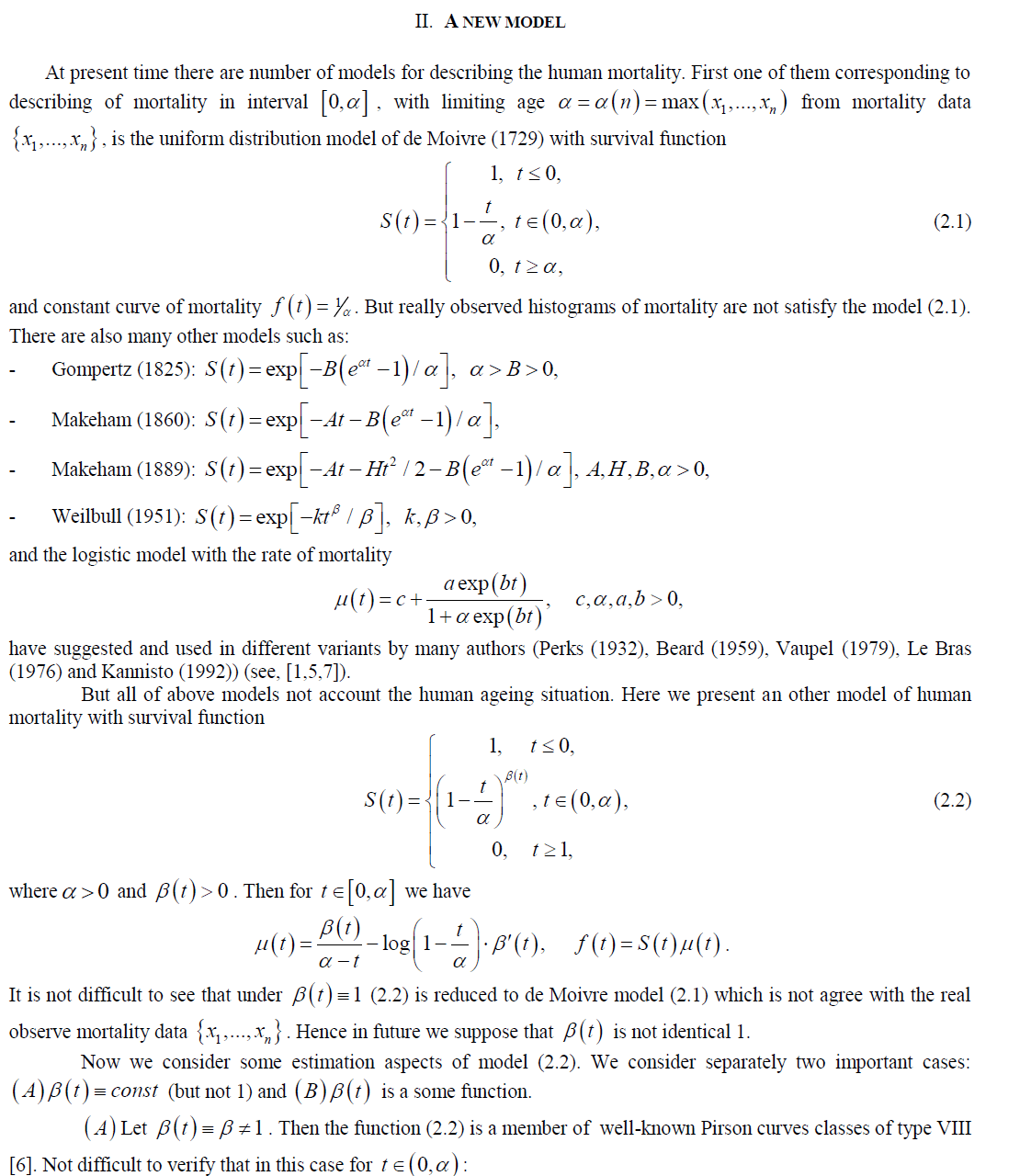 |
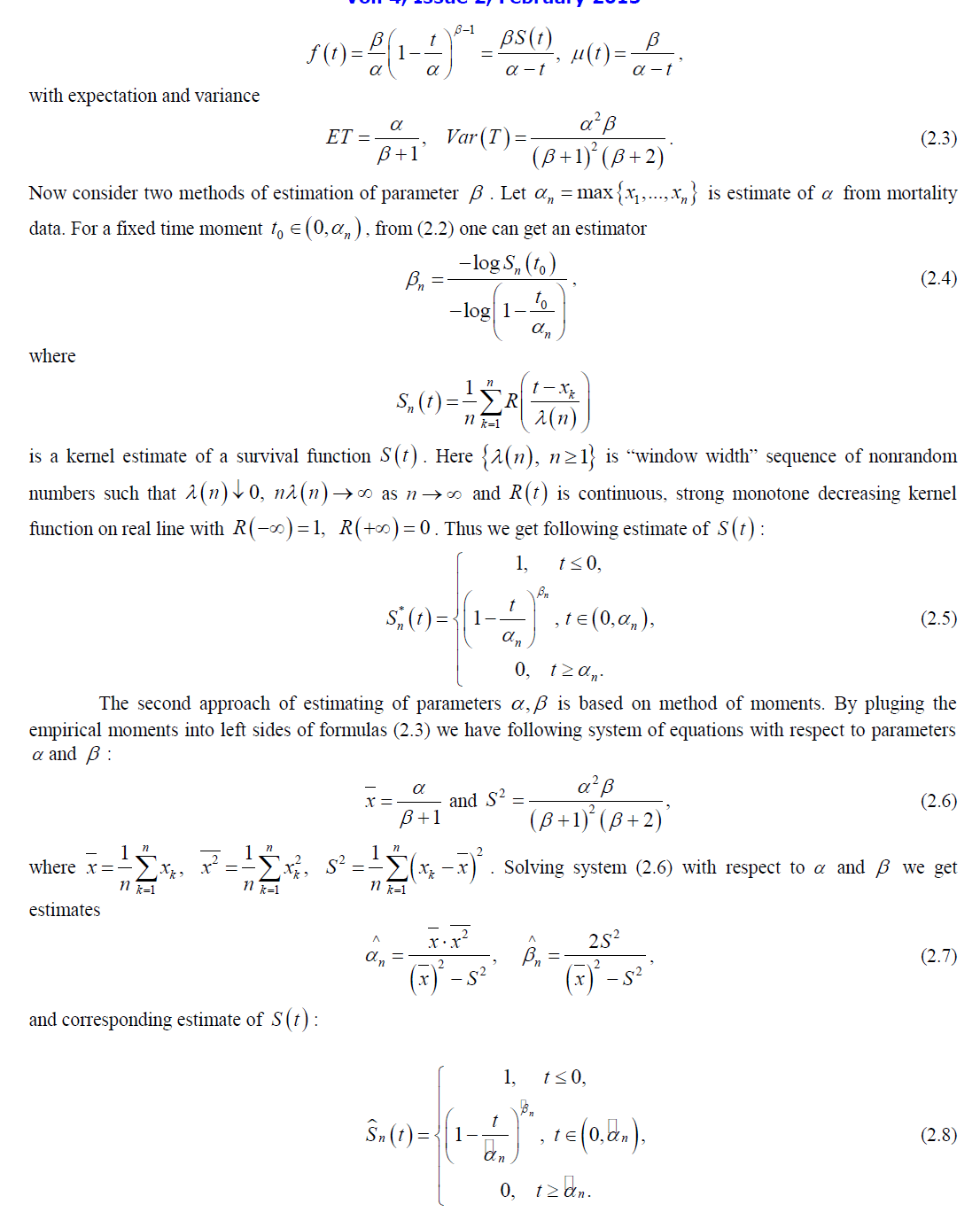 |
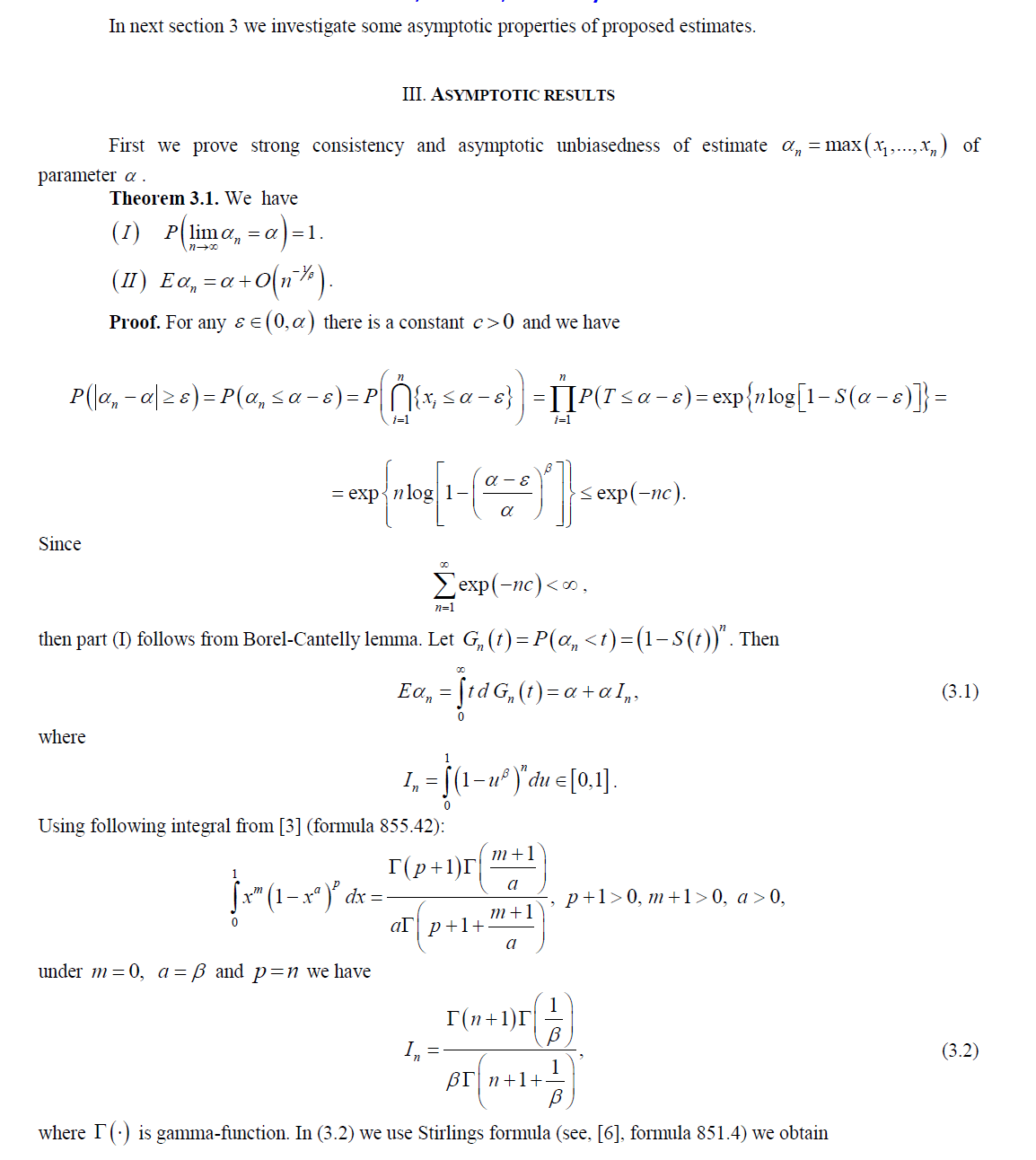 |
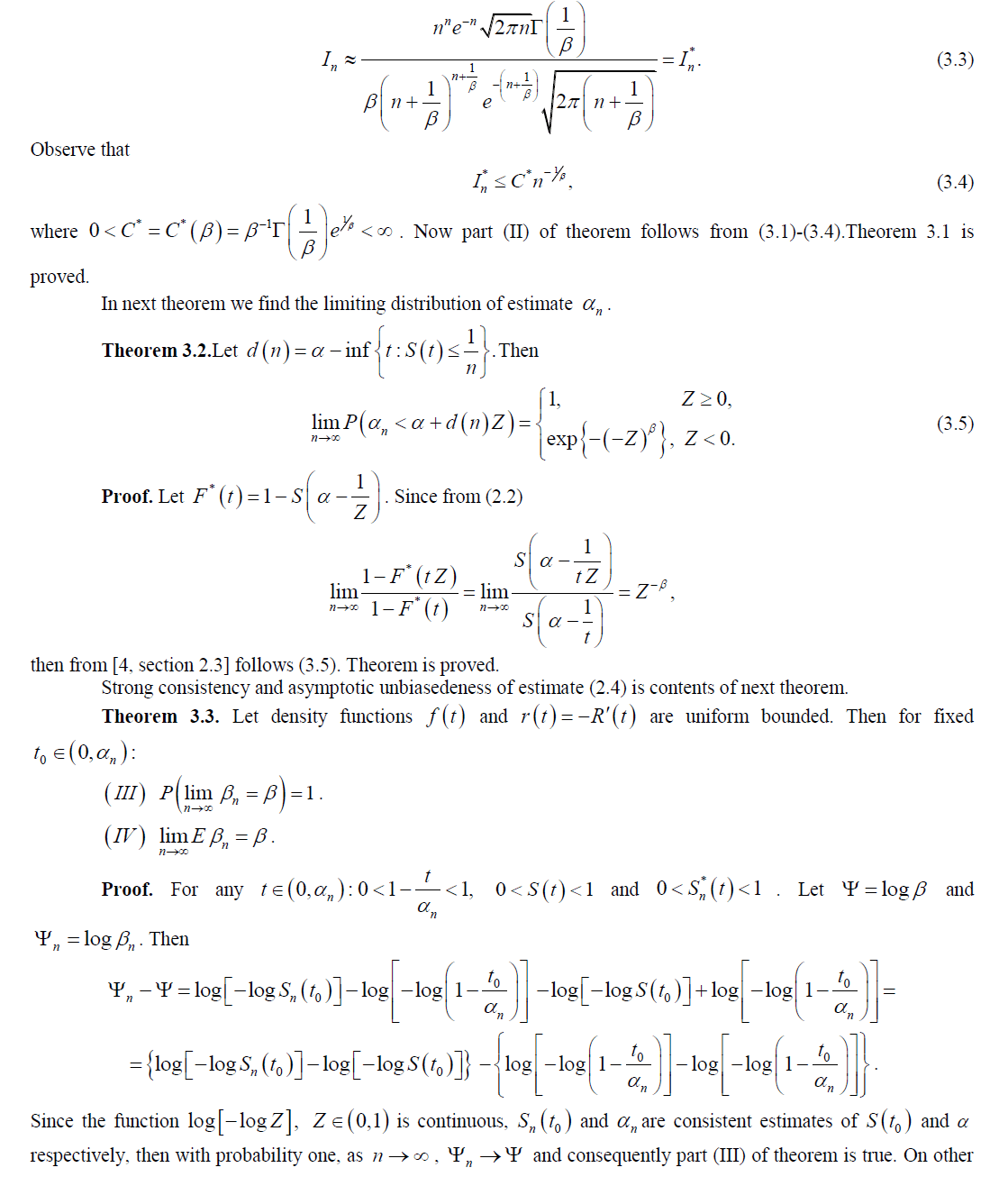 |
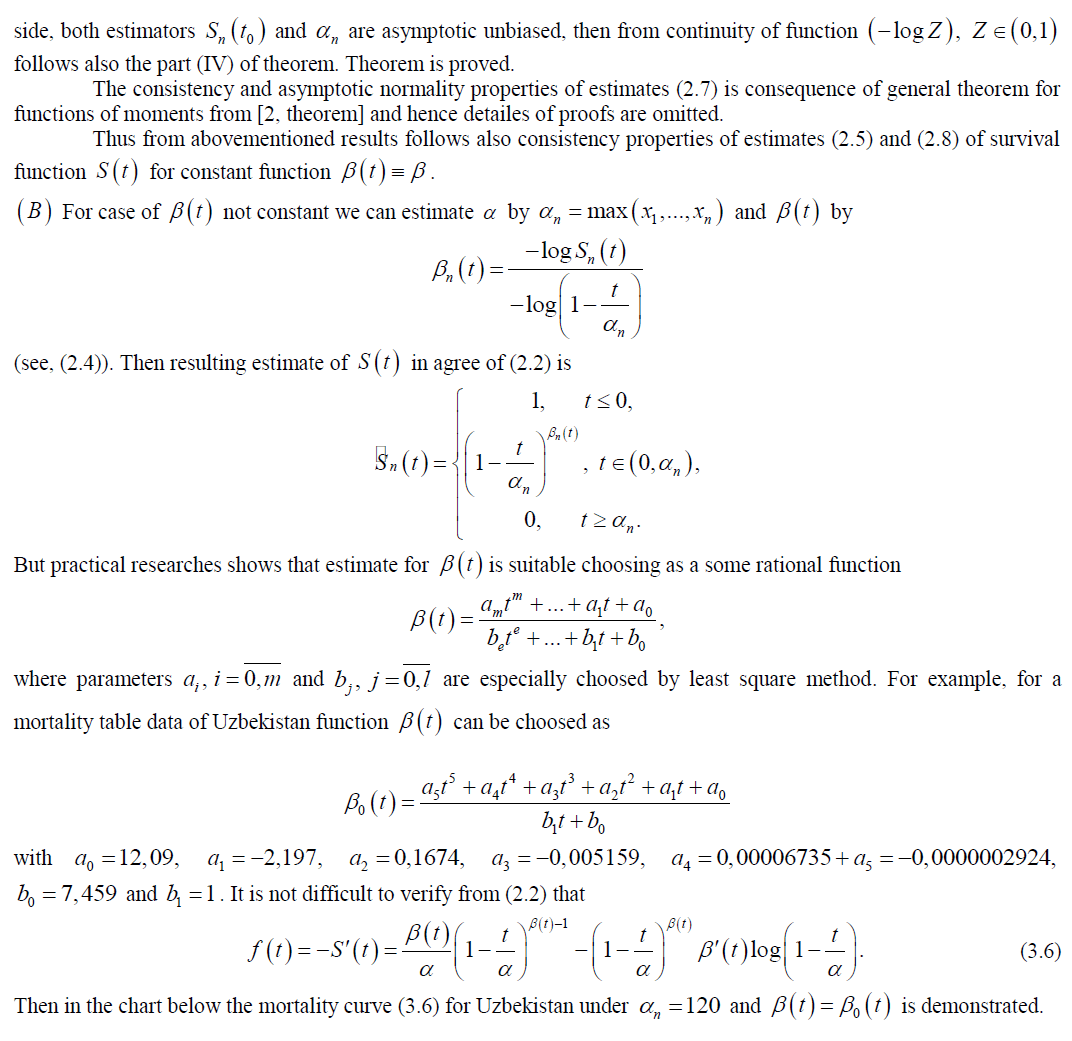 |
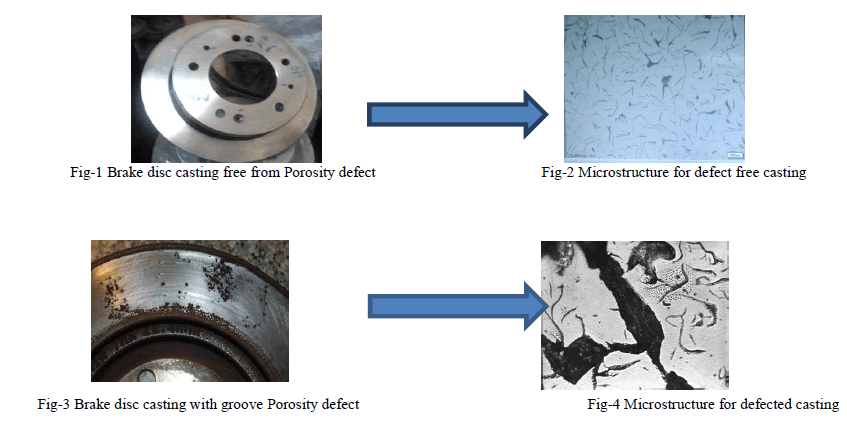 |
| Here, the first top corresponds to newborn child’s mortality, second one for teenager’s mortality and thirth one for old man’s mortality with mode mode t mode= 73 years |
References |
|